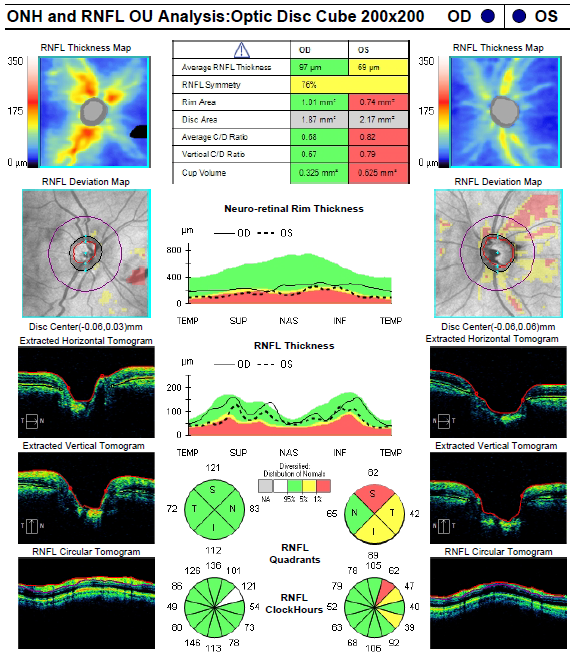Glaucoma is a progressive degeneration of the optic nerve and is usually the result of raised eye pressure. The most common type of glaucoma is termed “primary” as there is no specific cause. There are also secondary causes of glaucoma including angle closure, trauma and cataract, as well as other eye disease.
What are the symptoms of glaucoma?
The main challenge of glaucoma is that there are often no symptoms early in the disease process. The peripheral vision is first affected and it may not be until in advanced disease that this loss is noticed. Unfortunately, once the vision has been lost it is not reversible. If left untreated, only the central vision remains and eventually this can also lead to blindness. Occasionally patients may notice non-specific symptoms such as headaches, tiredness of the eyes, haloes around lights at night and patchy vision.

When you are reviewed by your eye specialist, your vision will be tested along with intraocular pressures, field testing and optic nerve assessment. Your optic nerve will also be scanned with an OCT which can quantitate the degree of optic nerve damage and remaining nerve fibres and monitor the progression in quantitative terms.
What treatments are available?
Most patients are treated using eyedrops and / or SLT laser to lower the intraocular pressure as the first-line treatment. Sufficient lowering of the intraocular pressure is indicated to slow the progression of vision loss. If reasonable intraocular pressures are not achieved by medication and SLT laser, then surgery may be required such as a stent procedure, trabeculectomy, tube drainage surgery. Stent surgery using MIGS devices have been a recent development with good results in minimally invasive glaucoma surgery, and may be combined with cataract surgery. Trabeculectomy or tube drainage surgery involves forming a new drainage to allow fluid to escape from the eye, thereby lowering the intraocular pressure. Medications may be used intraoperatively to augment the drainage procedure. The aim is to preserve functional vision for the lifetime of the patient.
Whilst glaucoma treatment and surgery are generally successful, there may be rare occasions when vision may be reduced due to the severity of the disease. Postop reviews will be required following any procedures, particularly to assess the intraocular pressure. Complications may include infection, retinal detachment and choroidal haemorrhage, vision loss but they are rare.
